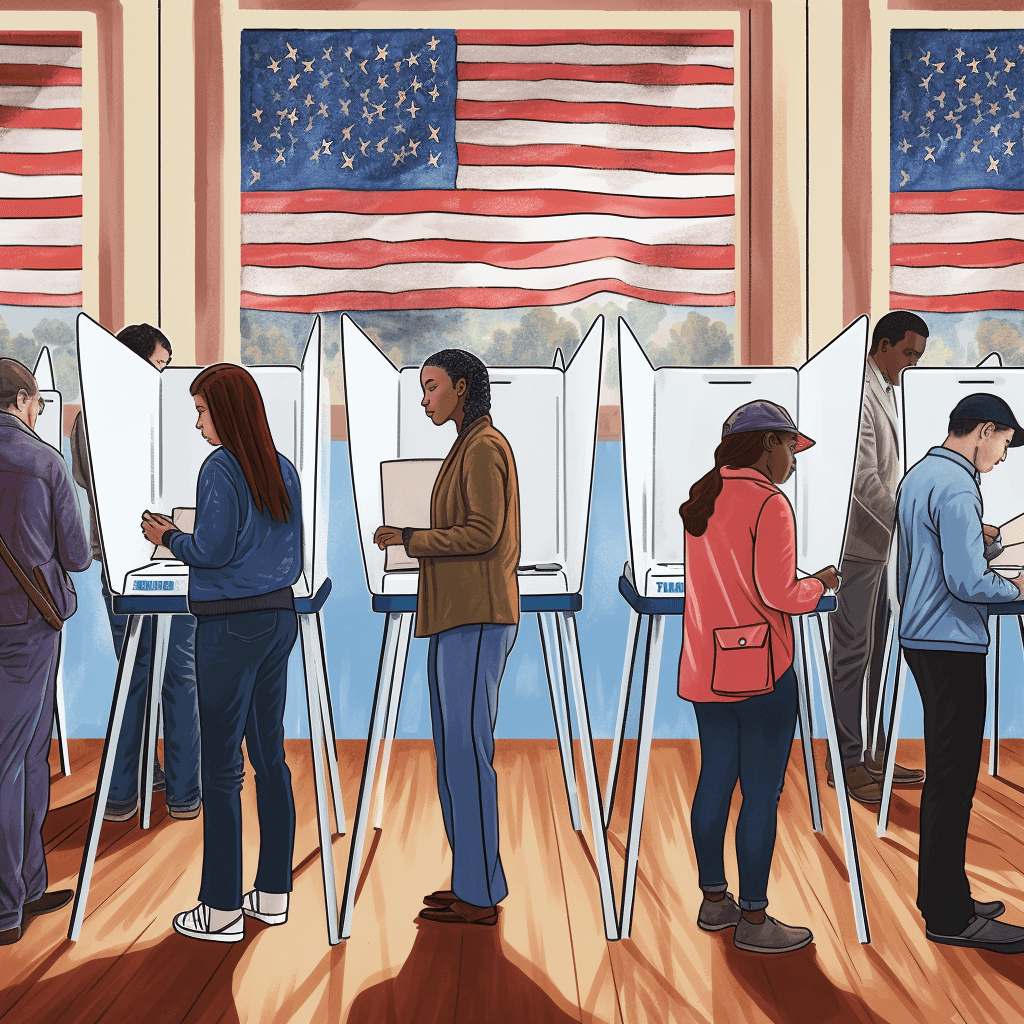Analyzing Voter Turnout: Key Insights From Florida And Wisconsin Elections

Table of Contents
Demographic Factors Influencing Voter Turnout in Florida and Wisconsin
Age and Voter Participation
Age is a significant predictor of voter turnout. Generally, older populations exhibit higher rates of participation compared to younger demographics. In both Florida and Wisconsin, this trend holds true.
- Florida: Data consistently shows higher turnout among voters aged 65 and older, while younger voters (18-29) demonstrate significantly lower participation rates. This can be attributed to factors like established civic routines, greater political engagement, and higher levels of political efficacy among older voters.
- Wisconsin: A similar pattern is observed in Wisconsin, though the age gap might be slightly less pronounced than in Florida. However, the lower turnout among younger Wisconsinites mirrors national trends, possibly due to lower levels of political knowledge and a feeling of disconnect from the political process.
- Data Sources: Data from the U.S. Census Bureau, state election commissions, and academic research studies provide valuable insights into age-based voting patterns.
Racial and Ethnic Differences in Voter Turnout
Racial and ethnic disparities in voter turnout persist in both Florida and Wisconsin. While the overall participation rates vary, certain minority groups consistently show lower turnout compared to white voters.
- Florida: Historically, voter turnout among Hispanic and African American communities in Florida has been lower than the state average. Barriers like language access, limited transportation, and historical disenfranchisement contribute to these disparities.
- Wisconsin: In Wisconsin, similar disparities exist, particularly among Native American and African American populations. Factors such as geographic isolation, limited access to information, and past discriminatory practices influence voter participation.
- Efforts to Increase Engagement: Numerous organizations are working to address these disparities through voter registration drives, language assistance programs, and community outreach initiatives aimed at increasing political engagement within underrepresented communities.
Socioeconomic Status and Voter Turnout
A strong correlation exists between socioeconomic status (SES) and voter turnout. Individuals with higher income levels and higher education levels tend to vote at higher rates.
- Florida & Wisconsin: In both states, data consistently demonstrates this relationship. Voters with higher incomes and higher levels of education are more likely to participate in elections.
- Reasons for Correlation: Higher SES individuals often have more access to information, more free time to participate in political activities, and a stronger sense of political efficacy. Conversely, lower SES individuals may face barriers such as lack of transportation, childcare issues, and less access to political information.
- Policy Implications: Addressing socioeconomic disparities requires policies that increase access to information, improve voter registration processes, and make voting more convenient for all citizens, regardless of income or education level.
Political Factors Impacting Voter Turnout in Florida and Wisconsin
Partisan Competition and Voter Engagement
The competitiveness of elections significantly impacts voter turnout. Close races tend to generate higher levels of voter enthusiasm and participation.
- Florida: Florida's close presidential and gubernatorial elections frequently exhibit high turnout rates, driven by heightened partisan competition and intense campaigning.
- Wisconsin: Similarly, Wisconsin, known for its highly competitive elections, shows increased voter turnout in closely contested races, reflecting the intensity of political engagement.
- Voter Enthusiasm: Close races often lead to increased voter mobilization efforts from both parties, generating higher levels of voter enthusiasm and participation.
Candidate Characteristics and Voter Turnout
Candidate attributes, including popularity, experience, and perceived competence, play a role in influencing voter turnout.
- Impact on Turnout: A charismatic or popular candidate can boost voter interest and participation, while a less appealing candidate might depress turnout.
- Media Coverage: The media's portrayal of candidates significantly impacts public perception and influences voter decisions, thereby affecting turnout.
- Examples: Analyzing past elections in both Florida and Wisconsin can provide insights into how specific candidate characteristics have affected voter participation rates.
Election Laws and Voter Turnout
State-level election laws significantly impact voter turnout. Factors like voter ID laws, registration deadlines, and early voting options influence participation rates.
- Florida & Wisconsin Comparison: Comparing the election laws of Florida and Wisconsin reveals differences in voter registration processes, early voting periods, and voter ID requirements. These variations likely contribute to differences in overall turnout.
- Impact of Specific Laws: Research analyzing the effect of specific election laws on turnout in both states can provide valuable insights into policy impacts.
- Potential for Reforms: Election law reforms aimed at increasing accessibility and convenience (e.g., automatic voter registration, expanded early voting) could potentially boost voter participation.
Comparing Voter Turnout in Florida and Wisconsin: Key Differences and Similarities
[Insert Charts and Graphs comparing voter turnout rates in Florida and Wisconsin across different demographic and political factors.]
While both Florida and Wisconsin show similar trends in age-based and socioeconomic influences on voter turnout, variations exist in the impact of specific election laws and the influence of partisan competition. Further research is needed to fully understand the nuances of these differences.
Conclusion: Analyzing Voter Turnout: Key Takeaways and Future Research
Analyzing voter turnout in Florida and Wisconsin reveals complex interplay between demographic characteristics, political factors, and election laws. Understanding these factors is essential for improving democratic processes and encouraging greater civic engagement. Age, race, socioeconomic status, and the competitiveness of elections all significantly impact participation. Election laws also play a crucial role.
Future research should focus on the effectiveness of specific voter outreach programs targeting underrepresented groups, the long-term consequences of fluctuating voter turnout, and the impact of digital technologies on voter participation. By understanding and addressing these issues, we can work towards improving voter turnout and strengthening our democratic institutions. We encourage you to delve deeper into understanding voter turnout, learn more about the election process in your state, and get involved in initiatives aimed at boosting voter participation – improving voter turnout is a collective responsibility.

Featured Posts
-
 La Retorica Nucleare Di Medvedev E Le Tensioni Con L Unione Europea
May 03, 2025
La Retorica Nucleare Di Medvedev E Le Tensioni Con L Unione Europea
May 03, 2025 -
 Doctor Who Future In Doubt Showrunners Remarks Raise Cancellation Fears
May 03, 2025
Doctor Who Future In Doubt Showrunners Remarks Raise Cancellation Fears
May 03, 2025 -
 Liverpools Transfer Plans Frimpong Discussions And Elliotts Status
May 03, 2025
Liverpools Transfer Plans Frimpong Discussions And Elliotts Status
May 03, 2025 -
 Diner Presidentiel Sardou Remet Macron A Sa Place
May 03, 2025
Diner Presidentiel Sardou Remet Macron A Sa Place
May 03, 2025 -
 Entrega De 7 Vehiculos Modernizacion Del Transporte Penitenciario
May 03, 2025
Entrega De 7 Vehiculos Modernizacion Del Transporte Penitenciario
May 03, 2025
Latest Posts
-
 Blake Lively And Anna Kendrick A Timeline Of Their Reported Feud
May 04, 2025
Blake Lively And Anna Kendrick A Timeline Of Their Reported Feud
May 04, 2025 -
 Blake Lively And Anna Kendricks Subtle Style Showdown At The Premiere
May 04, 2025
Blake Lively And Anna Kendricks Subtle Style Showdown At The Premiere
May 04, 2025 -
 Dispelling Rumors The Truth Behind The Another Simple Favor Set Dynamics
May 04, 2025
Dispelling Rumors The Truth Behind The Another Simple Favor Set Dynamics
May 04, 2025 -
 Blake Lively And Anna Kendricks Relationship On The Set Of Another Simple Favor The Director Speaks Out
May 04, 2025
Blake Lively And Anna Kendricks Relationship On The Set Of Another Simple Favor The Director Speaks Out
May 04, 2025 -
 Movie Premiere Anna Kendrick Mum On Blake Lively Lawsuit
May 04, 2025
Movie Premiere Anna Kendrick Mum On Blake Lively Lawsuit
May 04, 2025
